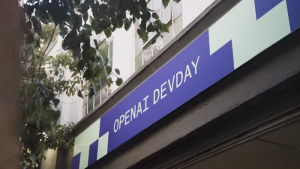Crowdsourcing the hunt for Malaysian Airlines flight 370
![]() As the hunt goes on for missing Malaysian Airlines Flight 370 and its 239 passengers continues, plenty of questions have been asked about how, in this day and age, a plane can simply vanish into thin air. We might not have the answers right now, but it’s not for the lack of trying. Thanks to the help of one US satellite company, more than two million people have now joined the effort to locate the missing plane.
As the hunt goes on for missing Malaysian Airlines Flight 370 and its 239 passengers continues, plenty of questions have been asked about how, in this day and age, a plane can simply vanish into thin air. We might not have the answers right now, but it’s not for the lack of trying. Thanks to the help of one US satellite company, more than two million people have now joined the effort to locate the missing plane.
These volunteers have joined the hunt thanks to DigitalGlobe, which on Monday launched a crowdsourcing campaign calling for people to help search for the missing airliner using its Tomnod satellite imagery platform.
The site proved to be an instant hit, to the point where its servers temporarily crashed on Monday after being overwhelmed by visitors. But now, Tomnod is back online, and more than two million people have helped out, tagging thousands of features on images taken by its five orbital satellites. The campaign is now DigitalGlobe’s largest ever, after previous efforts that include a crowdsourced search for Nina, a ship that disappeared off the coast of Australia last year, reports Wired.
With investigators none the wiser over Flight 370’s mysterious disappearance, DigitalGlobe’s Shay Har-Noy said in a blog post that “we have millions of people on our website, looking pixel by pixel, for anything out of place.”
The two million-plus volunteers are helping to scour high-resolution satellite images of a 24,000 square kilometer area of the Gulf of Thailand, where it’s believed the plane is likely to have gone down. So far, more than 645,000 features that could offer clues to the plane’s location have been tagged so far, as DigitalGlobe’s satellites continue to expand their area of search.
Malaysian Airlines flight 370 vanished on the morning of March 8, just hours after the Boeing 777-200 took off from Kuala Lumpur, headed to Beijing. Six days later, and despite the intensive efforts of ten different nations, no trace of the plane or its wreckage has been found. Authorities have few clues as to what happened to the plane, as no distress signal was received, and the pilots didn’t indicate any problems before they lost contact.
With today’s modern technology, it’s rare for an airline to disappear without even making a distress call. In previous cases when an airplane has gone down without warning, it’s usually because of an explosion that would typically leave debris scattered over a wide area.
A few other techie tidbits related to the search:
Apparently, some less clued up individuals have attempted to search for the plane using Google Maps. Unfortunately these images are often several months old, and so those wanting to help should do so using DigitalGlobe’s Tomnod platform.
Questions have been asked why the plane wasn’t using GPS. The answer is the most airplanes only use it for navigation purposes, not for reporting their own locations. An aviation safety analyst told NPR: “Airlines do use GPS systems for navigation, but GPS signals are not used in the transmission from the emergency locator transmitters.”
So what data does the airplane transmit exactly? According to the Wall Street Journal, Malaysian Airlines flight 370 sent live data from its onboard monitoring system to Rolls-Royce, which manufactured the system. But this data apparently doesn’t tell us where the plane was, only that it flew for around five hours before it lost radio contact and vanished. Malaysian officials have since claimed that the WSJ’s report is inaccurate, while Rolls-Royce declined to comment.
photo credit: U.S. Pacific Fleet via photopin cc
A message from John Furrier, co-founder of SiliconANGLE:
Your vote of support is important to us and it helps us keep the content FREE.
One click below supports our mission to provide free, deep, and relevant content.
Join our community on YouTube
Join the community that includes more than 15,000 #CubeAlumni experts, including Amazon.com CEO Andy Jassy, Dell Technologies founder and CEO Michael Dell, Intel CEO Pat Gelsinger, and many more luminaries and experts.
THANK YOU













